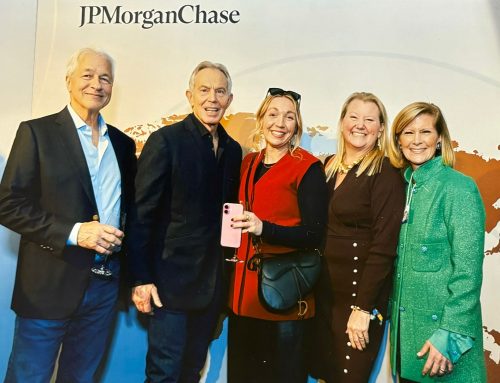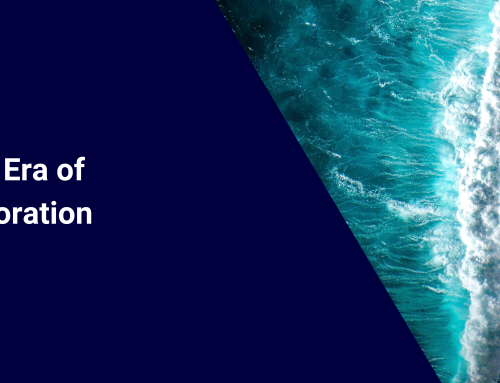On Wednesday 13th December, after an extended period of negotiations, COP28 concluded, with an agreement made on the first Global Stock Take. Following an intense, and productive ten days at COP28, returning to the UK has offered me the chance to take stock personally of the proceedings in Dubai.
The build-up to COP28 was overshadowed by an abundance of controversy. This controversy was not without sound speculation. With the five-year climate cycle of climate action under the Paris Agreement concluding, decisions around how fossil fuel production should be ceased would take centre stage. Yet, these momentous decisions were due to take place in the biggest oil-producing region in the world. Arguably, this was exacerbated by the appointment of COP President Sultan Al-Jaber allegedly questioning the science behind fossil fuels and climate change.
However, the other side of the coin offered a much brighter and more optimistic point of view; the UAE, quite simply, is where the resources are, where the wealth and the money lies, and where the greatest transition needs to happen.
To the credit of the UAE, the largest COP to date was pulled off impeccably. 70,000 delegates and 180 world leaders descended on Dubai and Expo City for what was a very productive fortnight. Over 170 announcements were made between pledges, declarations, publications, reports, and initiatives – double what was announced at COP27. Above all, it was at COP28 that historic, landmark pledges and negotiations were made, two of note being the global agreement to transition away from fossil fuels and the operationalisation of the Loss and Damage fund. The true success of these, of course, is up for debate and something I will come back to.
Before we jump into the complexities of the negotiations and the true “success” of COP, it is worth mentioning the experience of COP on the ground. This year, the blue and green zones were situated in Expo City, which I can only describe as a futuristic, almost dystopian domain. The Expo sprawled over acres of land and centred around Al Wasl Plaza – which most people will know as the eye-catching, golden dome which towered 67 metres over COP. Surrounding this centre piece, we had the green and blue zone which were so vast that the most appealing method of transport under the beating sun was either a golf buggy or electric scooter.
The green zone served as an inclusive hub for NGOs, businesses and wider stakeholders to collaborate and get involved in the COP proceedings. Whereas the blue zone was reserved for individuals registered with the UN body tasked with coordinating the global response to the global threat of climate change.
As official partners of the UK Pavilion, the Bankers for Net Zero team was delighted to be attending COP28 as part of the UK government’s delegation of climate leaders and therefore, a substantial portion of our work took place in the Blue Zone. Our flagship event took place on SME day and marked the launch of our Project Perseus demonstrator with endorsements from the Department for Energy Security and Net Zero and our partners NatWest and Sage. It was a remarkable evening, gathering climate experts, industry leaders and stakeholders to appraise the work of Perseus to date and delve into the next steps of the programme, including the future challenges and obstacles that we will inevitably face. On this thread, it is worth noting the ever-growing recognition of SMEs in the transition to net zero, with their fundamental position in decarbonisation now being championed by not only businesses and NGOs but financial institutions and national Governments.
With the blue zone serving as a base for high-level conversations and 1:1 meetings, it was only after a lengthy metro or taxi ride to downtown Dubai, that COP attendees arrived in the hub for mass networking. Almost every evening, networking drinks were hosted by Bloomberg COP connections on the rooftop of the Jumeirah Emirates Towers against the backdrop of an array of mesmerising skyscrapers and lights. Arguably, it was in these less formal settings that some of the most critical connections were made, ideas exchanged, and dots joined.
Getting back to the purpose of COP – and why delegates have gathered at the Convention of Parties since 1995 in Berlin, especially since COP21 and the Paris Agreement– we were there to mobilise global collective action to limit the global temperature increase to 1.5°C above pre-industrial levels, and act to adapt to the existing effects of climate change.
Key threads this year included mobilising climate finance for the global south and the energy transition. So what did COP actually achieve this year? The extent and degree of “success” will differ immensely according to who you talk to, as well as the specific pledges and negotiations in mind. For me personally – and from a green finance and decarbonisation perspective – there were two major decisions tied back to COP’s main goals.
The headline negotiation has been the wording and, specifically, the strength of the wording surrounding the phase-out or transition away from fossil fuels. Needless to say, the final agreement to ‘transition away’ from fossil fuels was by no means perfect, and the UK among several other developing nations stood shoulder to shoulder with The Alliance of Small Island Nations, hoping for a much stronger stance to phase out fossil fuels. While this agreement is not all we had hoped for, we need to remember that it still marks a new beginning and a turning point in climate action; it is the first time we have reached a global agreement to transition away from fossil fuels.
The second instigation that grasped global attention was the operationalisation of the Loss and Damages fund. On the surface, the L&D fund is a historic victory for climate justice, and with $400 million pledged on the first day of its actuality, to the $700 million pledged to date, the fund demonstrates a clear commitment to helping developing nations on the front lines of climate change cope with the cost of devastation. However, this too has underlying flaws. Crucially, the $700 million currently sitting in the fund represents 0.2% of the $400 billion needed annually to combat loss and damages. In this light, the L&D fund should be viewed as a good start which now requires continued momentum and commitment from developed countries to be considered a success.
These two major negotiations made at COP28 serve as historic turning points in the story of climate action. But they aren’t without their flaws. It is what we do now, in this brave new era of climate action, that really matters. Before signing off, I would like to briefly mention one of the dominant successes that shone through at COP – the power of collaboration. Dubai saw the culmination of the awe-inspiring work of thousands of individuals, organisations, Governments, and nations, which, put simply, would not have been possible without collaboration. By its nature, Bankers for Net Zero are conveners. Predominantly, we bring together banks, businesses, and regulators to accelerate this transition and we are extremely proud to work as the UK Country Chapter of the NZBA and serve as a piece of the huge puzzle of collaboration needed to achieve climate action.
COP28 was a whirlwind of controversy and contradiction, yet the value of the pledges and negotiations made cannot be understated. Now, it is crucial that the initiatives launched there are operationalised, and progress is made under pledges, declarations, and commitments made. Further to this point, I recently joined Mission Zero Coalition’s COP28 Reflections Summit, where the Former Prime Minister, Theresa May, summed it up in a nutshell: while targets and binding pledges help to focus the attention of policymakers, without decisive action, they achieve nothing.
I would like to finish by thanking our members, partners, and COP28 cornerstone sponsors, Tide and the British Business Bank for making our work possible.



